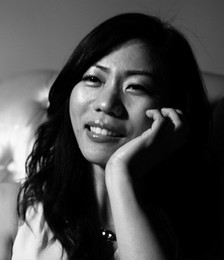
Da Jeong Choi (South Korea/USA) is currently a teaching fellow at the Division of Composition Studies and at the Division of Music History, Theory, and Ethnomusicology at the University of North Texas (UNT), Denton, TX, USA. Also, she is currently the president of the Composers’ Forum at UNT and director of the CHOI Ensemble (Contemporary Music Ensemble).
Her works have been broadly performed throughout Asia, the USA and recently premiered in European countries. Furthermore, Choi’s compositions have appeared at Electronic Music Midwest Festival (2009), Belvedere Chamber Music Festival (2009), Society of Composers, Inc. Region V and Region VI Conferences (2009), the 2nd Kentucky New Music Festival (2008), Electronic Music Midwest Festival (2008), CFAMC Biennial Conference (2008), NASA Biennial Saxophone Conference (2008), etc.
Da Jeong Choi received the Second Prize at the 2009 Con/un/drum Solo Percussion Composition Competition (2009), Honor Mention of Dallas Symphony Orchestra/Voices of Change (2008), the Second Prize at the Percussive Arts Society Composition Contest (2005) in the USA and numerous awards including the First Prize at the JoongAng Competition and Gold Prize at the MunHwa Broadcasting Corporation Composition Contest for Young Composers in South Korea. Moreover, Choi’s composition series titled Cantus Curatio (Healing Melody in Latin) for solo instrument, which is similar to the solo composition series by Luciano Berio and Vincent Persichetti, was premiered in 2008. Each piece is dedicated to victims who are diagnosed with a different disease.
String Quartet No. 1 (2009)
The piece consists of three main sections set off by significant contrasts. The first section creates variety of textures by the mixture of polyphonic and homophonic settings, various ways of motivic transformation, and the use of highly extreme registral range of strings. The second section opens with multiple layers in a slow tempo and with a more conceived melody and accompaniment texture; three primary melodic lines appear as a leading role and the first violin plays a supportive role. The third section provides new thematic materials and musical elements derived from the previous sections. The first section returns to the end as a coda.


